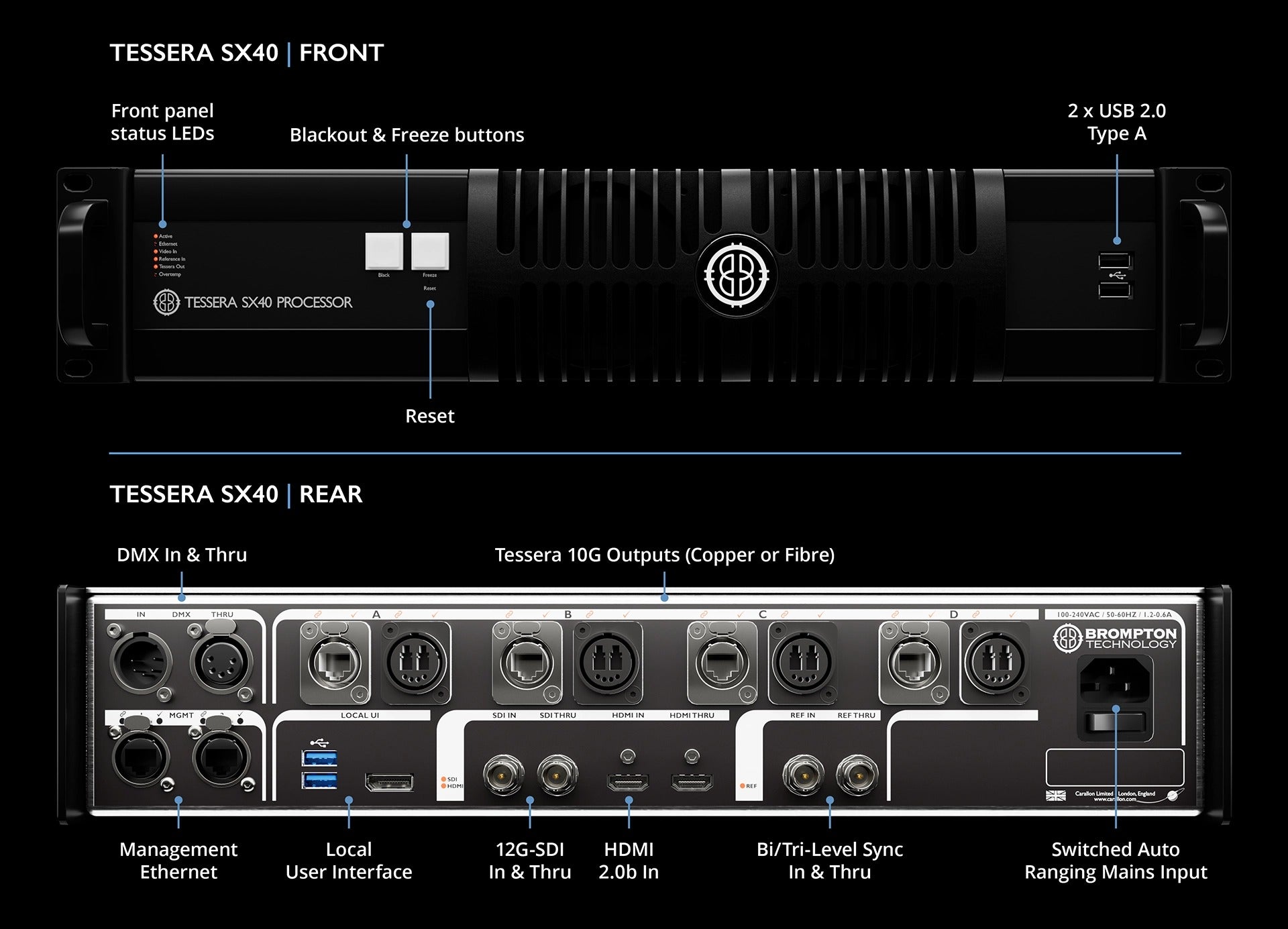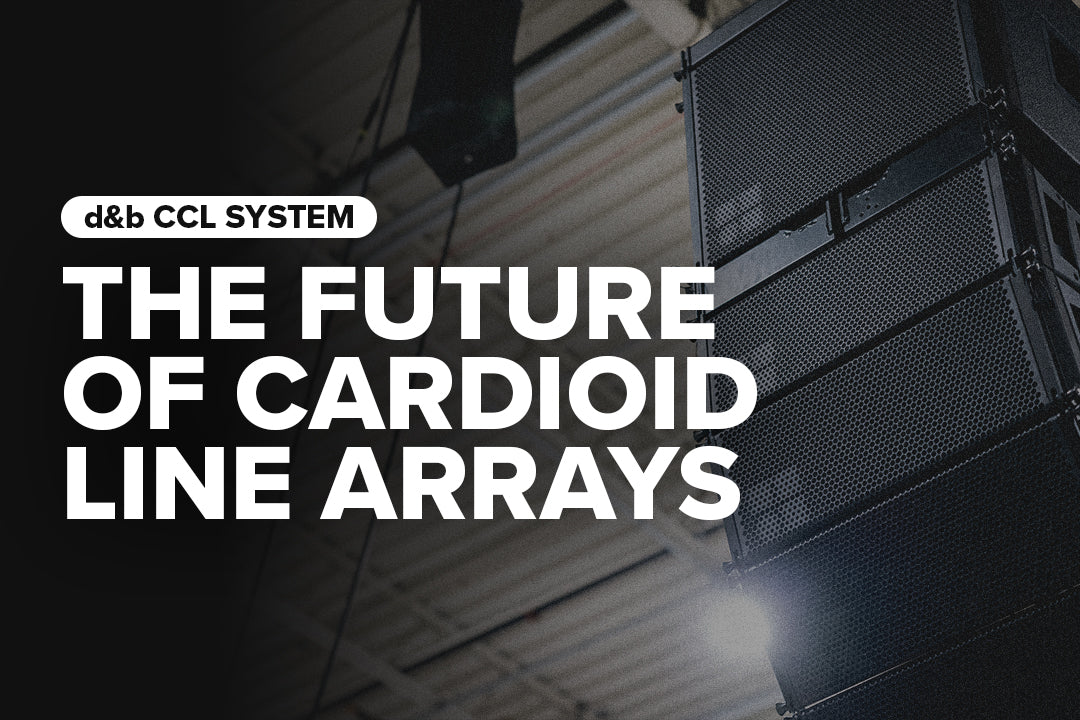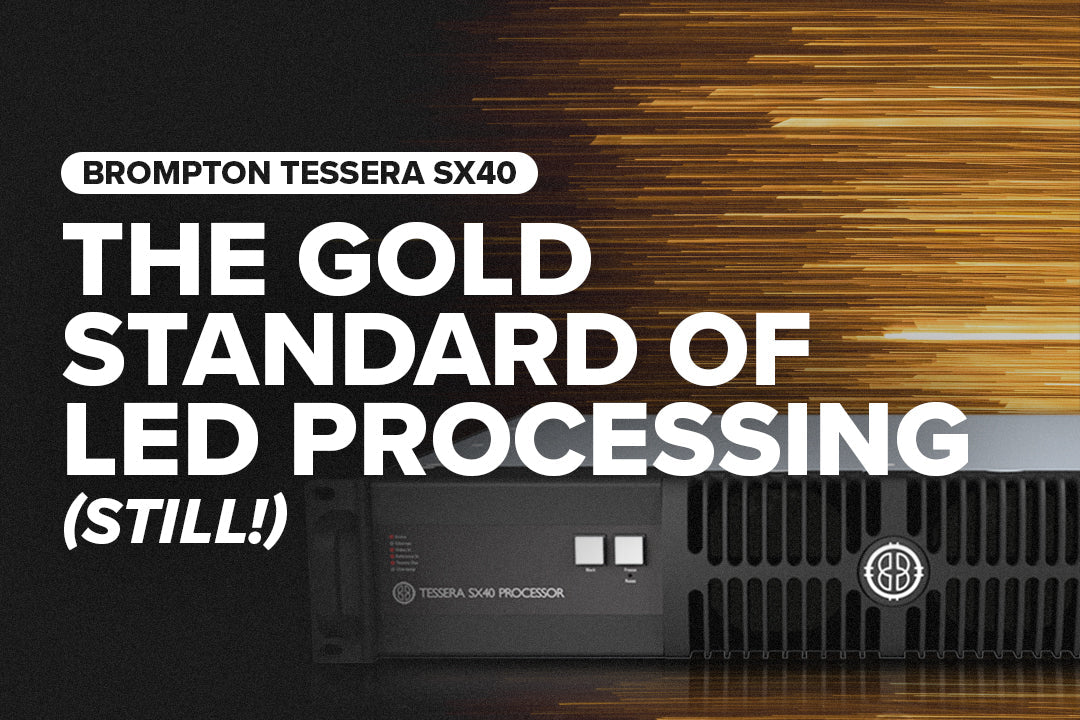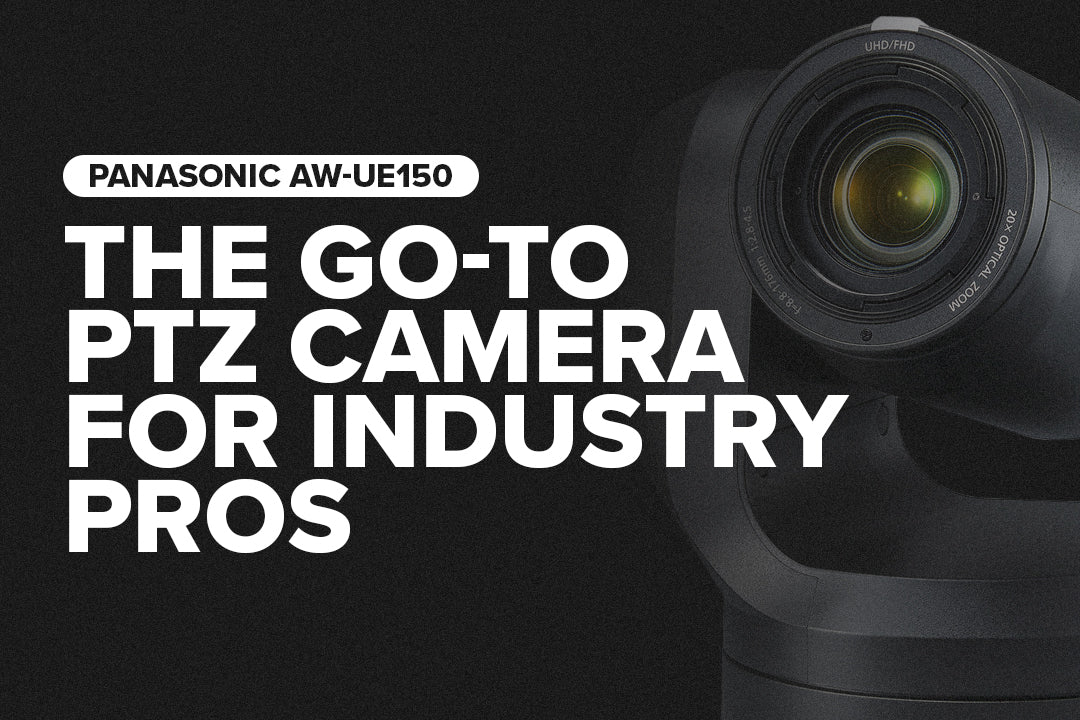LED walls are everywhere in live production these days. From concert stages and corporate keynotes to XR stages and broadcast sets.
And behind every LED wall that wows audiences is a processor working overtime to keep the image crisp, color-accurate, and flawlessly timed.
In high-pressure, high-stakes environments, your video processor is either your best friend or your biggest liability. The client’s breathing down your neck with last-minute changes, the content team wants “cinema color,” and the video engineer just muttered something about genlock across multiple formats.
In those moments, you don’t want a “budget-friendly” processor. You want one that’s trustworthy, proven, and powerful.
That’s where the Brompton Tessera SX40 earns its rack space.
The SX40 has been around for a few years now, but it’s still one of the most respected and widely used LED processors in the industry. From massive arena tours to ultra-precise XR stages, it’s been battle-tested across nearly every kind of production.
But in 2025, with workflows getting more complex and new gear flooding the market, does the SX40 still deliver?
Let’s break it down.
What Makes the SX40 So Good?
At its core, the SX40 is a 4K LED video processor, but that’s just the beginning. Think of it more like the engine behind your LED wall that ensures your content looks exactly the way it’s supposed to, every single time.
If you're using the SX40, chances are you care deeply about color science, latency, and reliability.
And Brompton nails all three.
Here are some key specs:
Inputs: 1× 12G-SDI or 4× 3G-SDI, and 1× HDMI 2.0 (4K60 10-bit 4:2:2)
Pixel Capacity: Up to 9.0 million pixels per processor
HDR Support: Full HDR pipeline (PQ and HLG), 3D LUTs, and per-pixel brightness calibration
Genlock: Supports Tri-Level Sync for perfect camera timing
Latency:Sub-frame (ideal for IMAG and camera tracking)
Tessera Software: Industry-leading calibration, mapping, and control tools
Frame Remapping: Lets you map different frames to different areas of your wall (crucial for XR)
Remote Management: Tessera Remote and browser-based control are great for large-scale and distributed systems
Redundancy: Full input failover and data redundancy built-in

The Real-World Ups and Downs
No piece of gear is perfect, but the SX40 comes awfully close. Here’s a real-world take on the pros and a few things to keep in mind.
Pros
Stunning Image Quality: Rich colors, smooth gradients, and dynamic calibration that makes even mid-level LED panels look amazing.
Tessera Software: One of the most powerful and intuitive control UIs in the business. Bonus points for remote access and quick firmware updates that actually improve things.
Ultra Low Latency: A lifesaver for IMAG and camera-facing LED walls.
Reliability: The SX40 is about as “set it and forget it” as it gets. It’s the Volvo (or insert your reliable car of choice) of video processors.
True Flexibility: You can mix panel types and resolutions, remap content by frame, and build complex LED environments with ease.
Input Redundancy & Genlock: Critical for live broadcast and XR workflows.
Feature Set for XR and VP: Frame remapping, 3D LUTs, and precise sync with tracking systems.
Things to keep in mind
Price Point: It’s a premium product, so it comes at a premium price. It may not be cheap, but it’s worth every dollar when failure isn’t an option.
Learning Curve: Not plug-and-play for the uninitiated. While the software is intuitive, there’s a lot under the hood so expect to spend a little quality time with the manual.
Requires XD Units for Distribution: They’re great, but it’s another piece of gear in your already-packed system.
Compatible Gear
Best Use Cases for the SX40
If you’re pushing PowerPoint slides to a 3.9mm wall in a ballroom, you probably don’t need this level of control. We’re certainly not going to stop you, but here’s where it shines:
-
Virtual Production / XR Stages
With features like Frame Remapping , Ultra Low Latency , and Genlock , the SX40 is one of the few processors that plays nicely in camera-tracked LED volume environments. It's used in conjunction with tracking systems and real-time render engines (like Unreal Engine) to drive hyper-synced environments.
-
High-End Touring
Think arena shows or international festivals. The SX40 offers reliable processing for massive LED backdrops, multi-format inputs, and seamless calibration across dozens of panels, even when LED batches get mixed.
-
Broadcast Studios
Brompton’s per-pixel color correction, low latency, and flicker-free genlock support make it ideal for TV sets, control rooms, or any environment where LED walls sit behind cameras.
-
Corporate & Install
If you're building out a high-end boardroom, LED video lobby, or permanent immersive space, the SX40 ensures consistent color and stability over the long haul.
ALTERNATE OPTION
Need Less Power? Consider the Tessera S8.
For smaller setups that don’t need the full muscle of the SX40, the Brompton Tessera S8 is the perfect alternative.
It delivers many of the same featureset we love about the SX40 (HDR, low latency, per-pixel calibration, Tessera’s powerful control software) but with less output and a slightly more compact footprint.
And as an added bonus...it features built-in distribution.
It's ideal for mid-sized tours or any application that doesn't require a massive pixel count, but still demands precision and reliability.
If the SX40 is the flagship, the S8 is the streamlined younger sibling...same DNA, just fewer calories.
FINAL THOUGHTS
Is the SX40 Still Worth It in 2025?
If you're in live events, virtual production, or broadcast environments where color fidelity, camera sync, and processing stability are mission-critical, the SX40 is still one of the smartest investments you can make.
Yes, there are cheaper options.
But it’s not about bells and whistles…it’s about precision, reliability, and adaptability . That’s where the true value lies.
The SX40 is like the Swiss Army knife of LED processing. For those working at the intersection of creativity and precision, it's hard to beat.
It won’t make bad content good, but it will make good content look amazing.
Need help speccing an SX40 for your next event or install?
Let’s talk gear.




